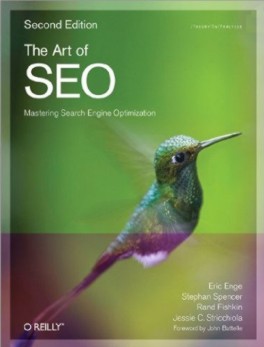| The Art of SEO 2nd Ed |
|
Author: Eric Enge, Stephan Spencer, Rand Fishkin & Jessie C Stricchiola This second edition of a book on mastering search engine optimization aims to bring you up to date with changes in search engine behavior. When revisiting a title that I've reviewed before my first question has to be how much has it changed. In this instance an already thick book has put on weight - but this turns out to be a good thing. The book still has the same overall aim of help you plan and execute a comprehensive SEO strategy and, of course it still faces the same problem that the secrecy around the way search engines work means that you can't have a science of SEO. Much of SEO is going to be guesswork so it is refreshing that this book acknowledges that SEO really is an art.
The changes made in the new edition of the book fall into three categories. There are minor edits to bring it up to date. These include updated statistics, links to new resources and fresh screen shots to reflect changes made by Google, Bing and Yahoo - and all such edits will need to be done on a regular basis. It's not just that the Internet continues to grow, its also that its an ever changing landscape. More extensive edits are used where there are important change since the first edition was published in 2009 for example there's a new paragraph in Chapter 7 outlining Google's policy on paid links. This chapter also outlines the way in which Google tries to outlaw link farms using what is now nicknamed the Panda algorithm This edition was, however, published before Google hardened its attitude towards incoming links and started to employ the Penguin algorithm and so it still promotes the idea that they having lots of such links is good. As a result some of the strategies it advocates would now be counter-productive.
Finally there is some completely new material. First we have Chapter 8: How social media and user data play a role in search results and rankings. This chapter opens by asking "Why rely on social signals?" and goes on to look at the social media signals used by a search engines. It lists the important ones as links in tweets and on Facebook and Google +, together with likes, shares and +1s. Later in the chapter it considers the indirect influence of social media marketing, examines ways to monitor and measure its impact and considers way to optimize the user experience to improve SEO. This new material seems both relevant and focused. There is also a substantial addition at the beginning of the penultimate chapter. Before tackling the topic of whether to build an in-house SEO team or outsource it or employ a combination of both, Chapter 13 now opens with a section entitled "The Business of SEO", which in the space of 5 pages gives a useful overview of the business benefits of SEO and provides a series of steps for conducting a market opportunity assessment and persuading your organization of the merits of SEO. This section also outlines the five stages of SEO maturity: Try; Invest; Measure; Scale; Compete. This puts the rest of the book into a more practical context and provide some useful insights into the "Art" of SEO. The book now includes a glossary which will be helpful for anyone who isn't conversant with web technology and jargon. Updating and the inclusion of new material (amounting to some 100 pages) has made this book seem more authoritative. Whether this is realistic is perhaps debatable - you have to remember that SEO is by its very nature nebulous and that anyone claiming to know how to do SEO as an exact science has to be, at best, exaggerating. However, readers of this book will be helped in their efforts to understand some of the issues and technicalities of attracting traffic to a website and so I can recommend it with the reservation that SEO is still mostly a matter of potluck and you also need to keep up with Google's latest policies.
Further Reading |
|||
| Last Updated ( Thursday, 14 March 2013 ) |

